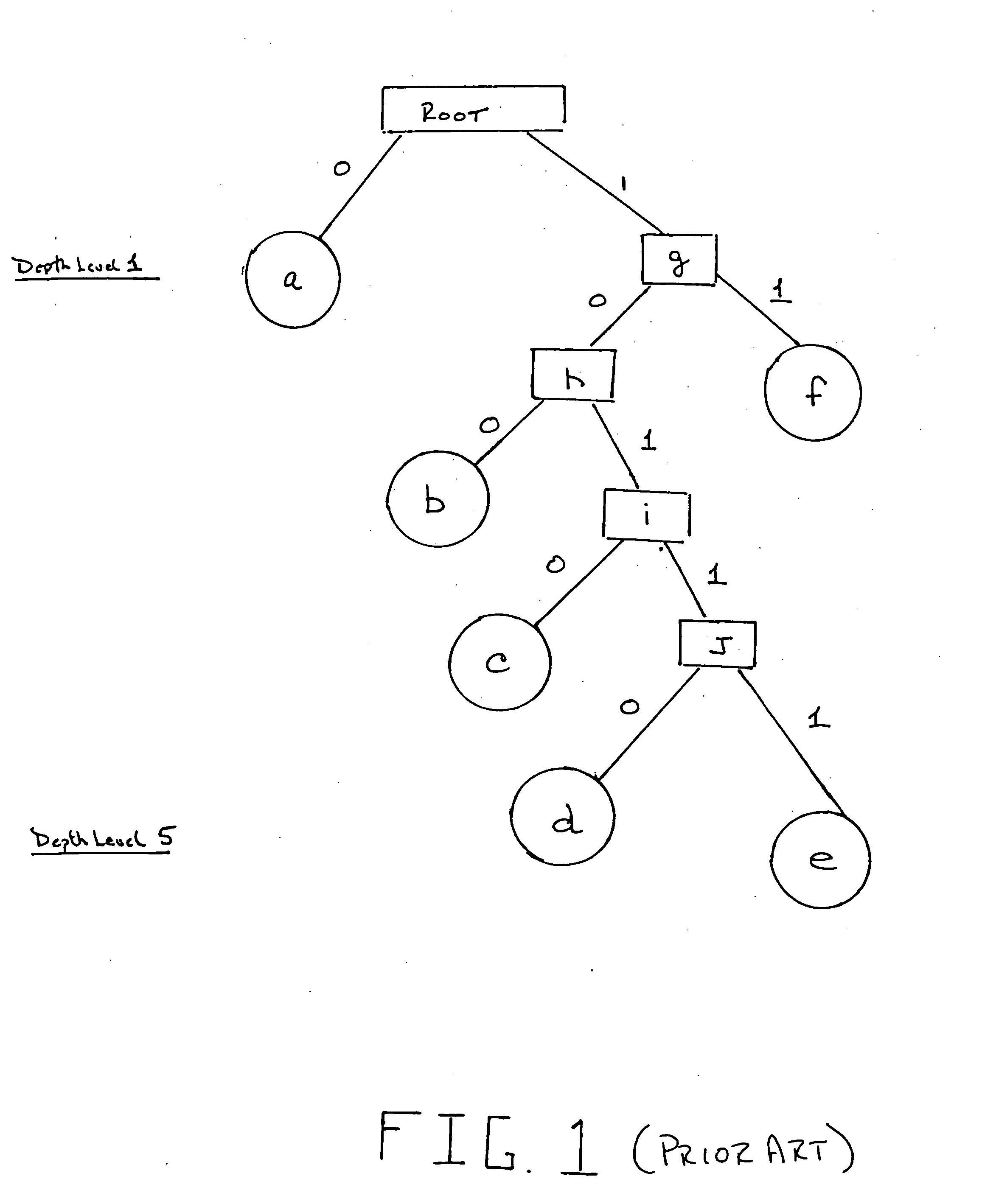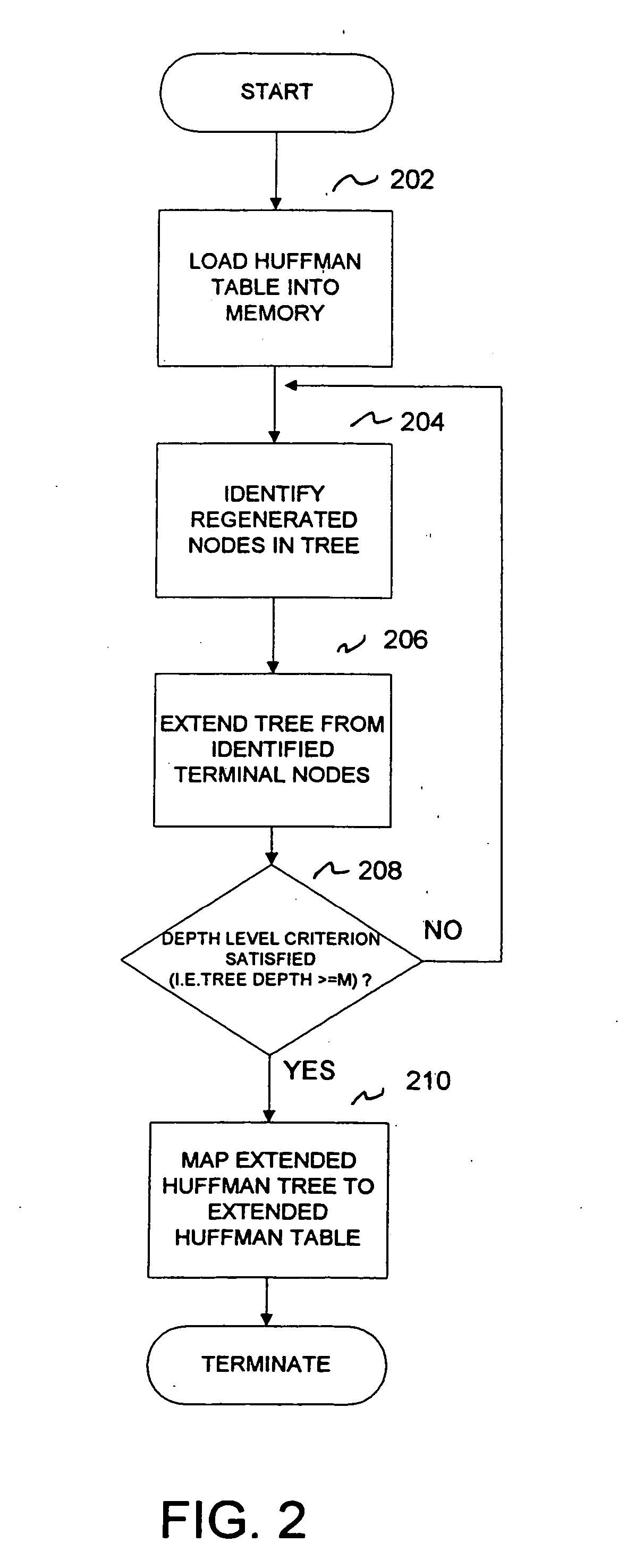Adaptive variable length decoding method
a variable length and decoding technology, applied in the field of decoding methods, can solve the problems of time-consuming and insufficient throughput of very high data rate applications, and achieve the effect of ensuring the decoding rate performan
- Summary
- Abstract
- Description
- Claims
- Application Information
AI Technical Summary
Benefits of technology
Problems solved by technology
Method used
Image
Examples
second embodiment
[0018] The present invention seeks to provide a method for enhancing the decoding rate of a variable length Huffman encoded input stream by extending a traditional Huffman tree to allow the decoding of multiple-coded symbols in a single clock cycle, for clock speeds typically operated in the range of 15-100 Mhz. In the present invention, a method is provided, utilizing the properties of run length coding (RLC), to decode multiple Discrete Cosine Transform (DCT) coefficient symbols in a single clock cycle.
[0019] In general, given a symbol set, where each symbol occurs a given number of times in an uncompressed file, the Huffman compression algorithm discovers the symbolic substitution for each original symbol to produce the shortest compressed file. The Huffman algorithm first builds a Frequency Table for each symbol in the uncompressed file (i.e., a message). For example, assuming a message, such as “abdfeeccba . . . cbabcdfcefcab” is derived from an alphabet of six letters, {a, b, ...
first embodiment
[0031] Row entries 1, 2, 3 and 5 of Table 3 illustrate that multiple encoded symbols can be decoded in a single clock cycle. Row entries 1, 2, 3, and 5 represent the improved decoding capability which can only be realized in the extended table in accordance with the In particular, it is shown at rows 1, 2, 3 and 5 that respective source symbol pairs (a,a) (a,b) (a,c) and (a,f) may be decoded in a single clock cycle utilizing the extended table.
[0032] In sum, the method improves the decoding throughput by extending the Huffman table from the most likely (frequently used) symbols to decode multiple symbols in a single clock cycle. The method provides an average decoding capability of M-1 bits per clock cycle when the maximum allowable depth level M is applied. Advantageously, the size of the original Huffman table is increased by only a nominal amount.
[0033] Referring now to FIG. 4 another embodiment of the present invention is shown for improving the decoding rate of a compressed v...
PUM
 Login to View More
Login to View More Abstract
Description
Claims
Application Information
 Login to View More
Login to View More - R&D
- Intellectual Property
- Life Sciences
- Materials
- Tech Scout
- Unparalleled Data Quality
- Higher Quality Content
- 60% Fewer Hallucinations
Browse by: Latest US Patents, China's latest patents, Technical Efficacy Thesaurus, Application Domain, Technology Topic, Popular Technical Reports.
© 2025 PatSnap. All rights reserved.Legal|Privacy policy|Modern Slavery Act Transparency Statement|Sitemap|About US| Contact US: help@patsnap.com



